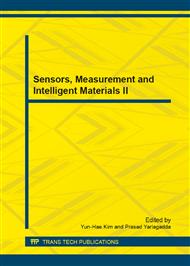p.1572
p.1578
p.1583
p.1588
p.1592
p.1599
p.1603
p.1607
p.1611
Study on Bioinformatics with Dynamic Characteristics Change of the Hippocampal Neuron Model Caused by the Alzheimer Disease
Abstract:
In the paper, based on the electrophysiological experimental dada, the neuron model under the pathology condition of Alzheimer Disease (AD) is built. The neuron models dynamic variation characteristics before and after the effect of AD are comparatively studied. Under the currents stimulation, compared with the normal neuron model, the AD neuron models dynamic characteristics have been obviously changed. Its changing range of the membranes interspike intervals (ISIs) obviously narrows, and the discharge patterns change rather single. In addition, its discharge threshold is much higher than the normal neuron models. So AD causes the neuron models excitability to depress markedly. The research reveals the neuron models dynamic characteristics changing under the effect of AD, which shows bioinformatics change of the neuron caused by AD. The research provides some theoretic basis for AD research by the neurodynamics theory.
Info:
Periodical:
Pages:
1592-1598
Citation:
Online since:
December 2013
Authors:
Keywords:
Price:
Сopyright:
© 2014 Trans Tech Publications Ltd. All Rights Reserved
Share:
Citation:


